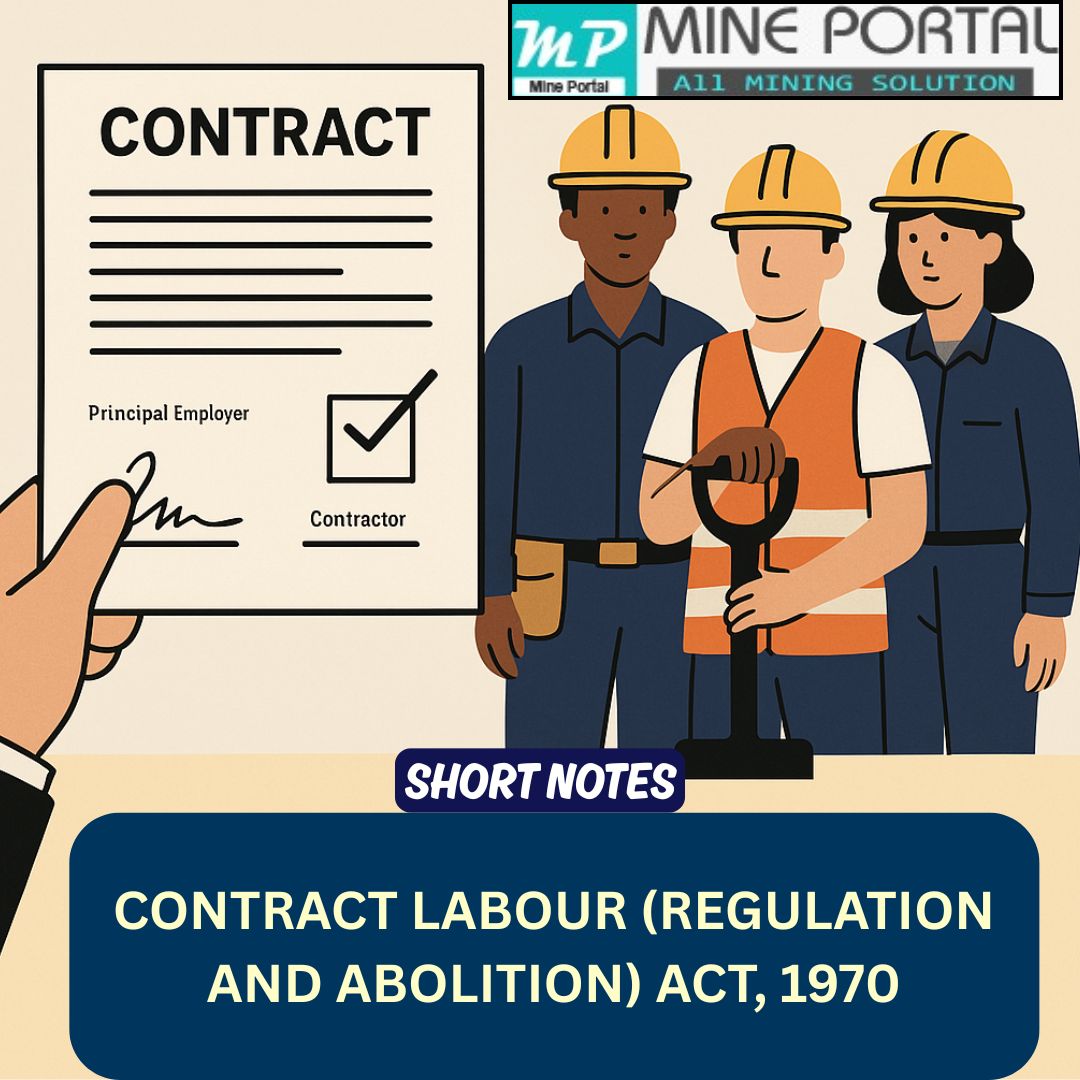
SHORT NOTES ON CONTRACT LABOUR (REGULATION AND ABOLITION)ACT, 1970
1. Introduction & Purpose
-
Aim: Regulate contract labour, ensure welfare, and allow abolition where needed.
-
In Force: From 10 Feb 1971.
-
Applies to: Establishments/contractors with 20+ workers in past 12 months (Govt. may extend to fewer).
-
Not Covered: Casual/intermittent work less than 120 days/year.
2. Key Definitions (Sec 2)
-
Appropriate Govt.:
-
Central: Railways, ports, mines, etc.
-
State: Others.
-
-
Contract Labour: Workers hired via contractor for principal employer.
-
Contractor: Person supplying labour/results (includes sub-contractors).
-
Principal Employer: Head/owner/manager of govt. office, factory, mine, etc.
-
Workman: Manual/skilled/supervisory/clerical worker (excludes managerial, high-paid supervisors, out-workers).
3. Advisory Boards (Sec 3-5)
-
Central Advisory Board: Advises on contract labour matters; includes CLC(C), govt. reps, employers, workers, etc.
-
State Advisory Board: Similar to Central, for state-level matters.
-
Committees: Formed by Boards for specific issues (e.g., welfare).
4. Registration of Establishments (Sec 6-10)
-
Mandatory Registration: For principal employers.
-
Revocation: If misrepresented or invalid (Sec 8).
-
Effect of Non-Registration: Can’t employ contract labour (Sec 9).
-
Prohibition (Sec 10): Govt. can ban contract labour in specific jobs after consulting Board.
5. Licensing of Contractors (Sec 11-15)
-
Licensing Officers: Appointed to issue/manage licenses.
-
License Needed: For all contractors employing contract labour.
-
Conditions: May include wages, hours, amenities, etc.
-
Revocation: For violations (Sec 14).
-
Appeal: Within 30 days to appellate officer (Sec 15).


No comments added yet!